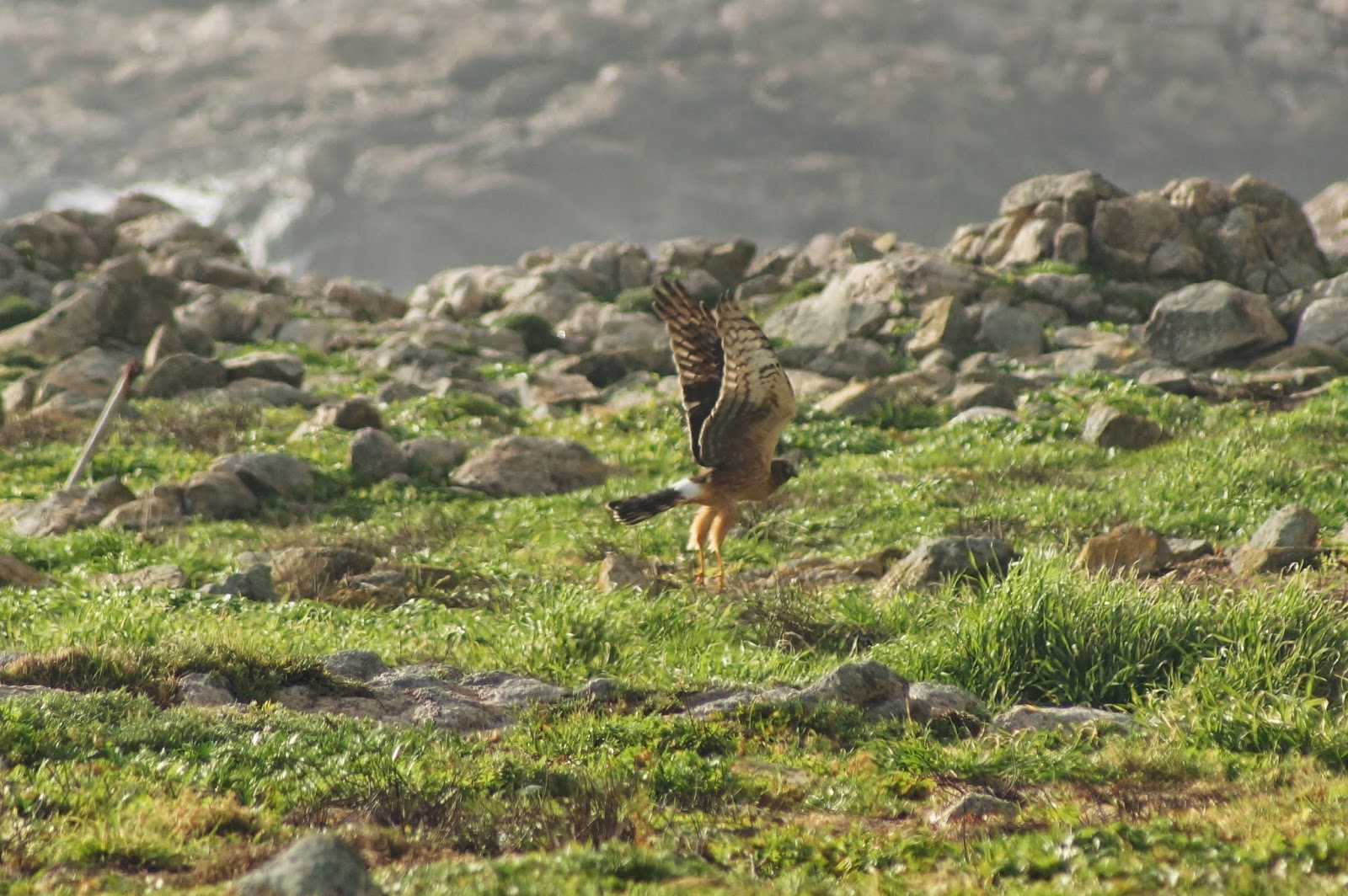 |
| Fog moving in over lighthouse hill |
Apart from coping with limited viz, we have been rather busy. Fish and wildlife services were here this week with 7 contractors, which meant doing 3 boat landings in 4 days, and 2 helicopter landings with the coastguard. We have had our first major re-shuffle of large male elephant seals, with displacements and injuries.
On top of this, we have been keeping on top of our other pinniped studies, keeping track of all cow arrivals, movements and pupping (we now have 20 pups), and searching for bird species. We have had two new bird arrivals of note. Firstly the purple finch, a beautiful red bird, and a northern harrier (who has since departed).
 |
| Northern harrier |
As the grey whale migration has reached its peak, we have carried out 3 all day surveys. These span 7am - 5pm, with observers taking 2 hour blocks. On our last survey we saw 56 grey whales, 4 humpbacks, and 10 unidentified dolphins. The weather has cooperated brilliantly, and has allowed me to start doing timelapses more regularly without worrying about it raining whilst I travel the island. Firstly, I took the 7-9am and 3-5pm slots at the lighthouse, which allowed me to enjoy the elevated perspective at different times, and catch a timelapse of both sunrise and sunset. The below video shows a quick timelapse of a sunrise from east landing, and then both sunrise and sunset from the lighthouse.
https://vimeo.com/116721816
Secondly, a timelapse of the elephant seal colony on sand flat. It shows the movement of cows and pups, and also if you look down the beach in the left corner of the video, you can see a cow stuck throughout the video. This is the second time it has happened when pregnant cows attempt to haul out on a steep incline where there is a slight dip below. This cow was stuck for several hours, and ended up struggling through a pool of her own blood from a cut on her flippers gained from scrambling repeatedly on rocks. She managed to get back down (at the end of the video), and then tried again and managed to get up (Check This Farallon blog post for more information on the first occurrence).
https://vimeo.com/116722692

No comments:
Post a Comment